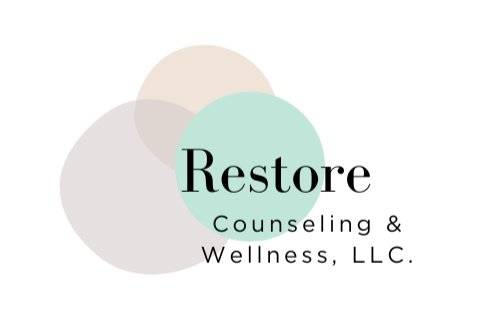
Somatic Therapy in Virginia Beach & Online
Healing starts in the body
When talk therapy isn’t enough, your body often holds the missing pieces. That tightness in your chest, the pit in your stomach, the constant fatigue—it’s not “just stress.” It’s your body’s way of telling its story.
Somatic therapy is a gentle, body-based approach to healing that helps you tune into those messages. Through awareness, breath, movement, and grounding practices, you’ll learn how to listen to your body and release the tension, fear, and pain it’s been holding—sometimes for years.
At Restore Counseling & Wellness, we blend somatic work with evidence-based trauma care to help you reconnect with your body in a safe and empowering way. We move at your pace, honoring what feels safe and supportive in each session. You don’t have to relive every detail of your past to heal—you just have to come as you are.
Somatic Therapy Can Help With:
Chronic tension, headaches, or body pain
Anxiety that feels stuck in your chest or gut
Fatigue or burnout that doesn’t go away with rest
Feeling disconnected, numb, or shut down
The lingering effects of trauma
Panic attacks or emotional overwhelm
Polyvagal Theory helps us understand how the nervous system responds to safety, connection, and threat. It was developed by Dr. Stephen Porges and centers on the vagus nerve—a key pathway that runs from your brain through your body, influencing your heart, lungs, digestion, and even your ability to connect with others.
When the vagus nerve senses safety, it helps you feel calm, grounded, and connected. But when it senses danger, it can shift your body into fight, flight, or freeze—even if you're not in immediate harm. In therapy, we use Polyvagal Theory to gently help your nervous system return to a state of regulation, so you can feel more at ease in your body and more in control of your emotions and responses.
Based in Polyvagal Theory
What to Expect
Somatic therapy isn’t about big dramatic breakthroughs—it’s about slowing down and tuning in. Together, we’ll explore small, safe steps that bring more ease to your nervous system. This might include:
Breathwork and grounding techniques
Tracking body sensations without judgment
Gentle movement or stillness to support nervous system regulation
"Orienting" exercises (looking around the room to remind your brain you're safe)
Vocal toning or humming to stimulate the vagus nerve
Tapping to provide vagal nerve toning
"Push against" exercises (gently pressing hands into a surface to reconnect with strength)
Safe touch exercises like placing a hand over your heart or belly
Polyvagal-informed mapping of your body’s responses to stress and safety
These practices are always tailored to you, and we’ll only explore what feels supportive and accessible.
Ready to feel safe in your body again?
Whether you're holding tension, anxiety, or the weight of past trauma, your body is ready to be heard. Let’s create a path toward ease, connection, and lasting relief—together.





